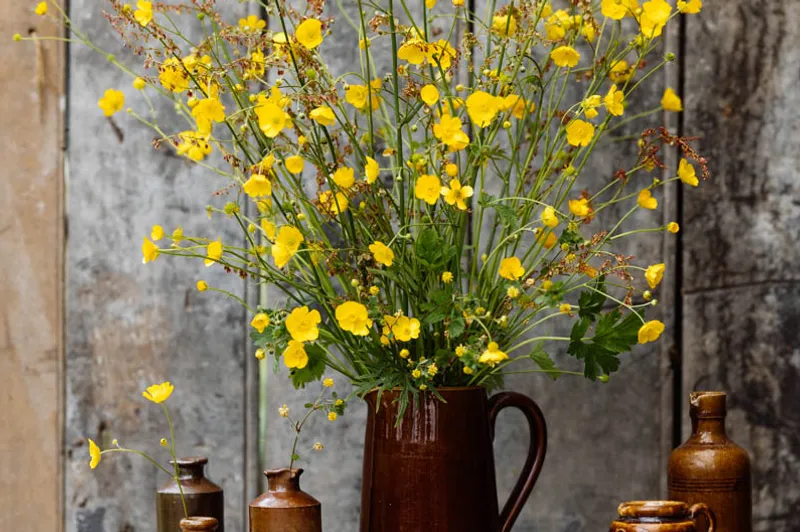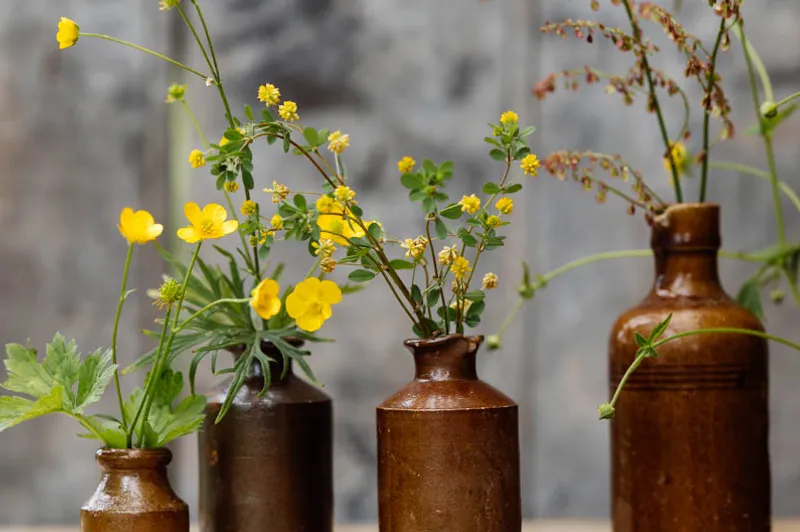Gardeners have a fraught relationship with wild plants and weeds, but there is a growing movement to appreciate the charms and biodiversity benefits of these native plants and early colonisers. To offer a fresh perspective, we’ve elevated typical uninvited garden guests to be the stars of exquisite cut-flower displays, inspired by art and bound to change your mind.

Weeds vary in size enormously, but they all have several traits in common that make them so successful. They have become a menace because of their adaptability and fecundity. To me, buttercups herald freedom and nostalgic, carefree summer walks through fields, and I have plenty growing in the borders and lawn at home – they make me smile. It’s a shame we don’t tolerate them more in our flower beds, particularly the creeping form, which spreads by runners and seed. It is entirely possible to embrace the weeds and wildflowers in your garden, editing them as you would any other prolific self-seeder, by deadheading early and removing unwanted seedlings and plants before they get out of hand. Understanding how individual weeds grow is key to controlling or cultivating them.
Arranging weeds using buttercups and sorrel: how to achieve the look

My inspiration for this arrangement came from Lucian Freud’s 1968 painting Buttercups – freshly picked wildflowers simply displayed in an enamel jug, placed in a sink and painted as he saw it. Here, I’ve combined both meadow and creeping forms
of buttercup, with the spangled rusty seedheads of sorrel and meandering stems of black medic – a creeping weed found in lawns and pathways, which has yellow flowers that are attractive to bees and butterflies.

It recreates the rich, earthy colours that Freud captured so well in his painting, set off by the deep-brown glaze of the coffee pot. Less showy than their Ranunculus asiaticus cousins, buttercups last quite well as a cut flower overall; individual blooms will drop petals daily, but that’s part of their charm. They can bring a waft of shimmering yellow sunshine to many an arrangement.
Plants used
Medicago lupulina – black medic
Ranunculus acris –meadow buttercup
Ranunculus repens –creeping buttercup
Rumex acetosa – sorrel
Other yellows to consider
Hypochaeris radicata – cat’s ear or false dandelion
Lotus corniculatus – bird’s-foot trefoil
Medicago arabica – spotted medic
Papaver cambricum – Welsh poppy
Sinapis arvensis – wild mustard
Taraxacum officinale – common dandelion